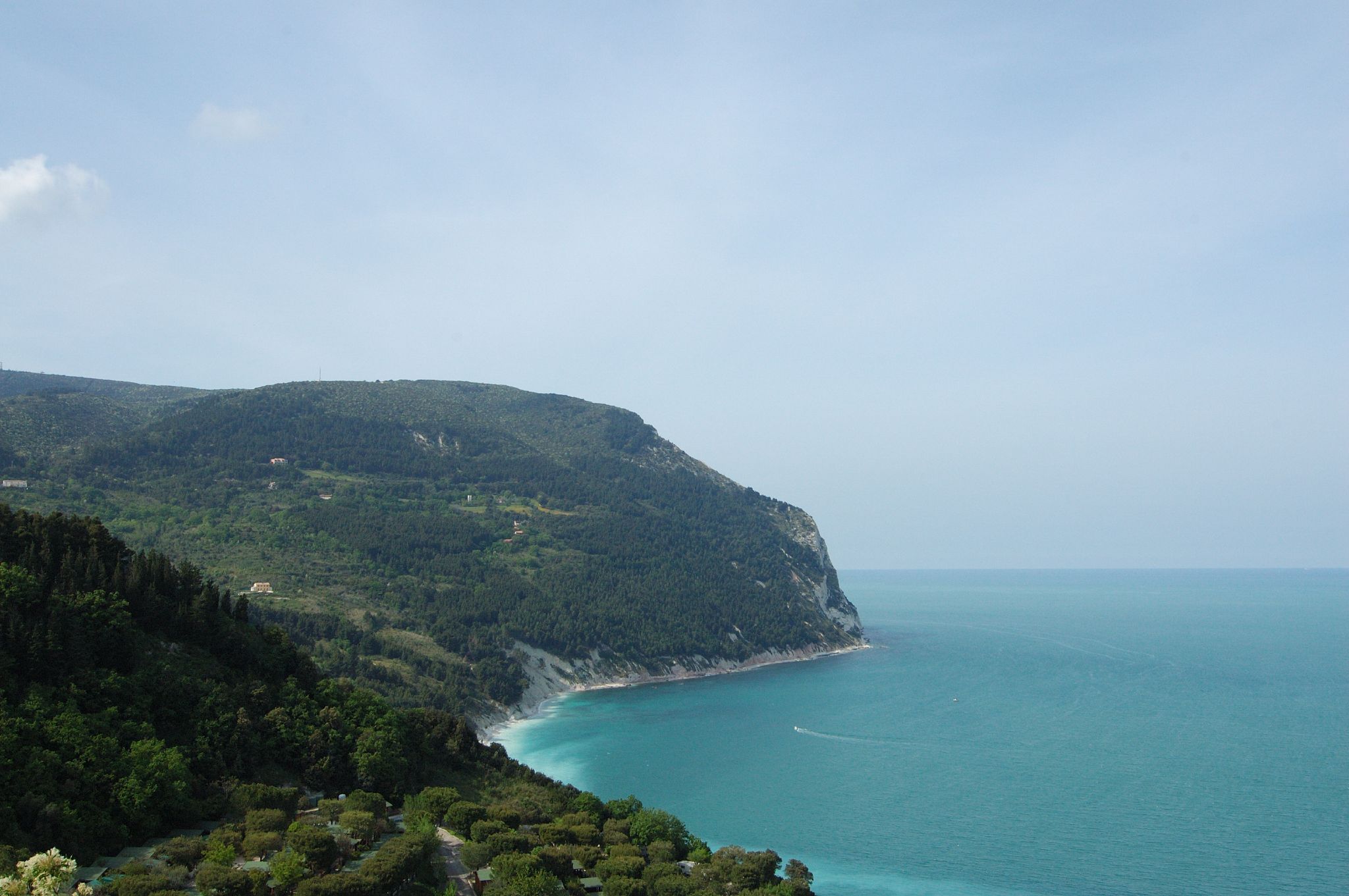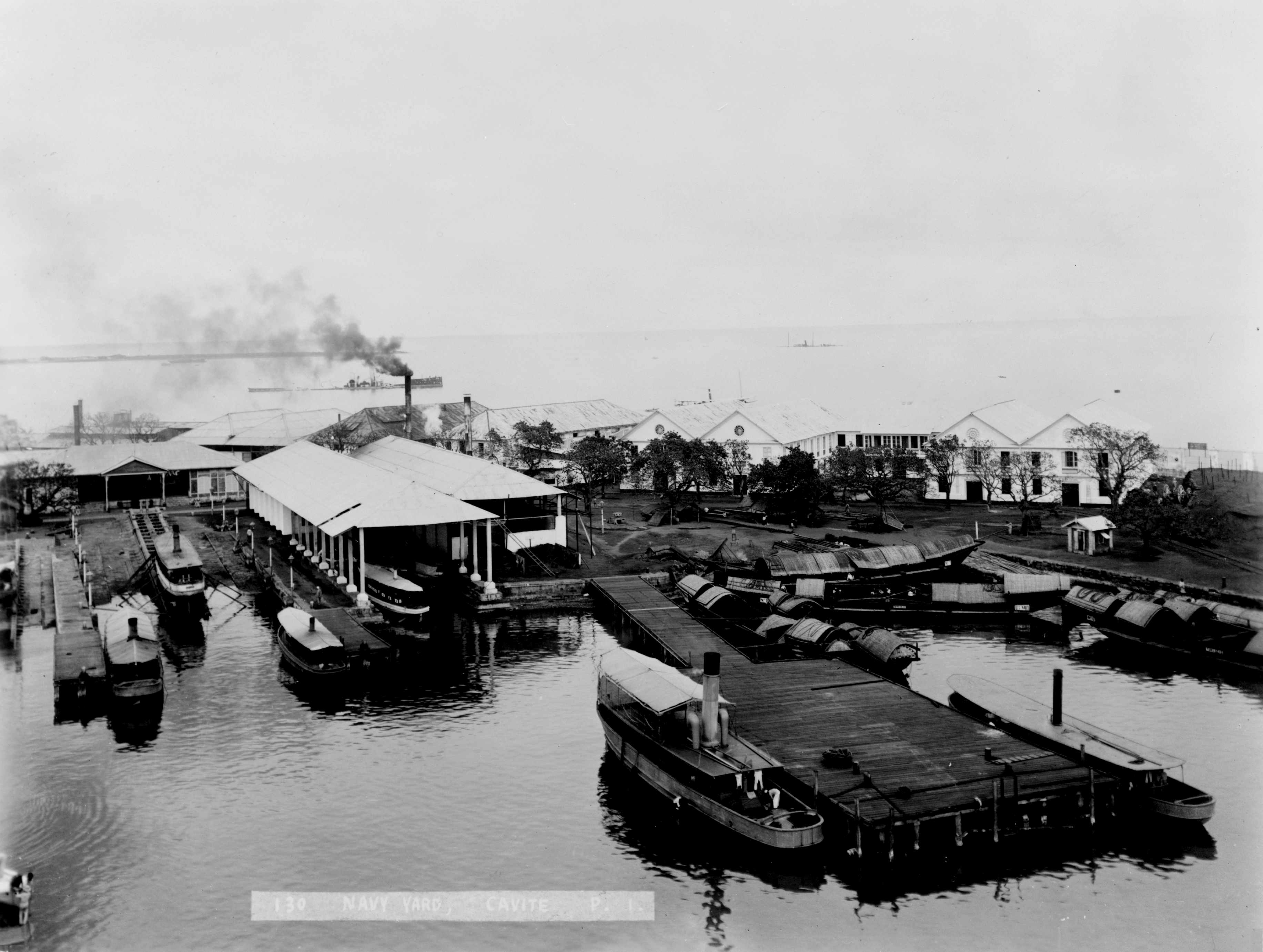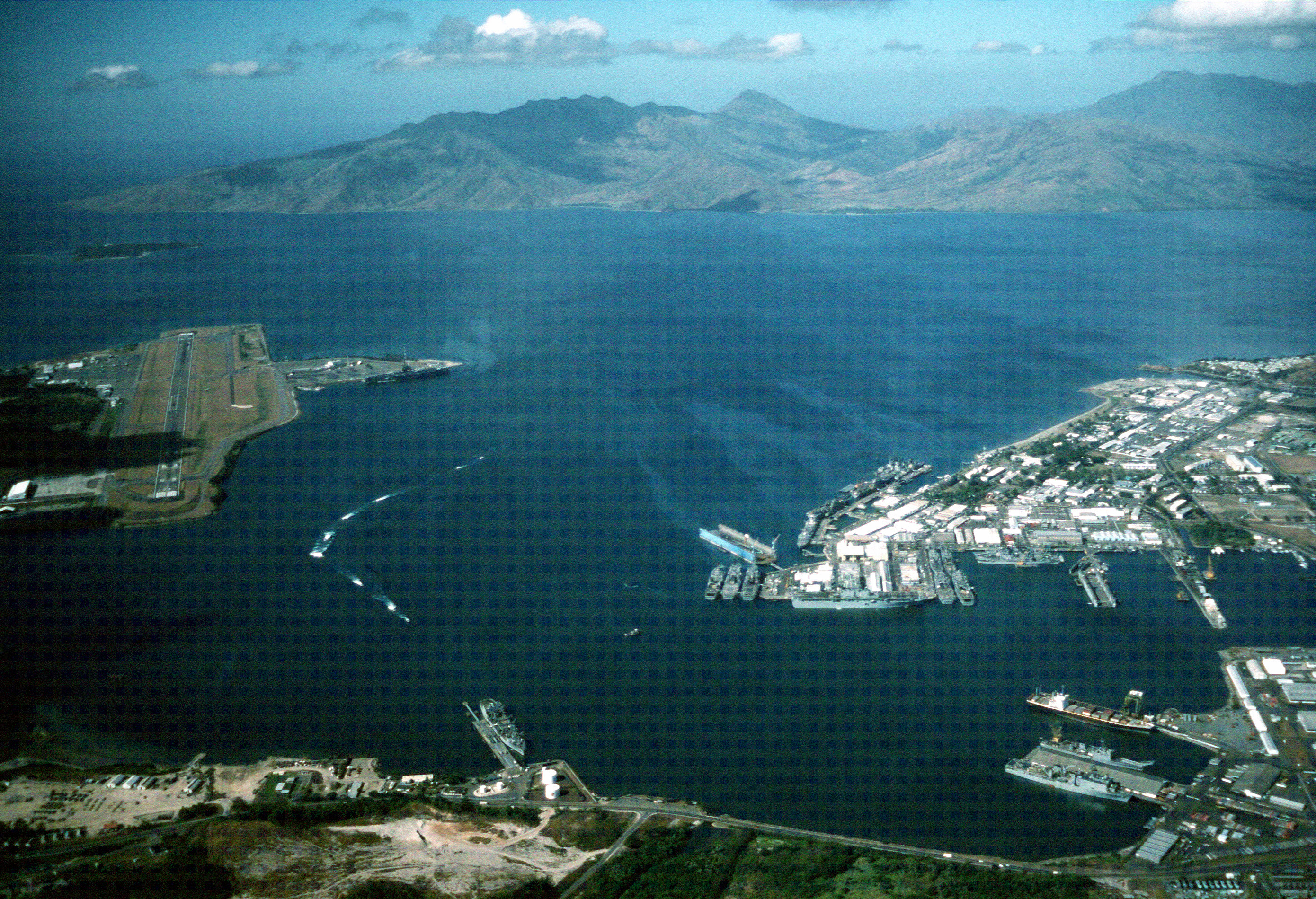|
USS Pompey
USS ''Pompey'' (AF-5) was an auxiliary ship of the United States Navy, acquired in 1898 for service in the Spanish–American War, which went on to serve as a collier, tender, and storeship in the Philippines, before being sold into commercial service after World War I. She was sunk by Japanese aircraft on 29 December 1941. Service history The ship was built in 1897 by S.P. Austin and Sons, Ltd. of Sunderland, England, as the freighter SS ''Harlech''. She was purchased by the U.S. Navy from James and Charles Harrison of London, England, on 19 April 1898, and commissioned as USS ''Pompey'' at Naval Station Norfolk on 26 May 1898. She then served as a collier in Rear Admiral William T. Sampson's squadron off Cuba, returning to Norfolk on 23 August, and was decommissioned at the Philadelphia Navy Yard on 18 January 1899. ''Pompey'' was recommissioned in 1901 to serve in the Asiatic Fleet, supporting U.S. forces in the Far East. In February 1903 ''Pompey'' accompanied the gunboats , ... [...More Info...] [...Related Items...] OR: [Wikipedia] [Google] [Baidu] |
Pompey
Gnaeus Pompeius Magnus (; 29 September 106 BC – 28 September 48 BC), known in English as Pompey or Pompey the Great, was a leading Roman general and statesman. He played a significant role in the transformation of Rome from republic to empire. He was (for a time) a student of Roman general Sulla as well as the political ally, and later enemy, of Julius Caesar. A member of the senatorial nobility, Pompey entered into a military career while still young. He rose to prominence serving the dictator Sulla as a commander in the civil war of 83–82 BC. Pompey's success as a general while young enabled him to advance directly to his first Roman consulship without following the traditional '' cursus honorum'' (the required steps to advance in a political career). He was elected as Roman consul on three occasions. He celebrated three Roman triumphs, served as a commander in the Sertorian War, the Third Servile War, the Third Mithridatic War, and in v ... [...More Info...] [...Related Items...] OR: [Wikipedia] [Google] [Baidu] |
Cavite Naval Station
Naval Station Sangley Point was a communication and hospital facility of the United States Navy which occupied the northern portion of the Cavite City peninsula and is surrounded by Manila Bay, approximately eight miles southwest of Manila, the Philippines. The station was a part of the Cavite Navy Yard across the peninsula. The naval station had a runway that was built after World War II, which was used by U.S. Navy Lockheed P-2 Neptune, Lockheed P-3 Orion, and Martin P4M Mercator maritime patrol and anti-submarine warfare aircraft. An adjacent seaplane runway, ramp area and seaplane tender berths also supported Martin P5M Marlin maritime patrol aircraft until that type's retirement from active naval service in the late 1960s. NAS Sangley Point/NAVSTA Sangley Point was also used extensively during the Vietnam War, primarily for U.S. Navy patrol squadrons forward deployed from the United States on six-month rotations. The naval station was turned over to the Philippine govern ... [...More Info...] [...Related Items...] OR: [Wikipedia] [Google] [Baidu] |
Ships Built On The River Wear
A ship is a large watercraft that travels the world's oceans and other sufficiently deep Sea lane, waterways, carrying cargo or passengers, or in support of specialized missions, such as defense, research, and fishing. Ships are generally distinguished from boats, based on size, shape, load capacity, and purpose. Ships have supported exploration, trade, Naval warfare, warfare, Human migration, migration, colonization, and science. After the 15th century, Columbian Exchange, new crops that had come from and to the Americas via the European seafarers significantly contributed to world population growth. Ship transport is responsible for the largest portion of world commerce. The word ''ship'' has meant, depending on the era and the context, either just a large vessel or specifically a Full-rigged ship, ship-rigged sailing ship with three or more masts, each of which is Square rig, square-rigged. As of 2016, there were more than 49,000 merchant ships, totaling almost 1.8 billion ... [...More Info...] [...Related Items...] OR: [Wikipedia] [Google] [Baidu] |
1897 Ships
Events January–March * January 2 – The International Alpha Omicron Pi sorority is founded, in New York City. * January 4 – A British force is ambushed by Chief Ologbosere, son-in-law of the ruler. This leads to a punitive expedition against Benin. * January 7 – A cyclone destroys Darwin, Australia. * January 8 – Lady Flora Shaw, future wife of Governor General Lord Lugard, officially proposes the name "Nigeria" in a newspaper contest, to be given to the British Niger Coast Protectorate. * January 22 – In this date's issue of the journal ''Engineering'', the word ''computer'' is first used to refer to a mechanical calculation device. * January 23 – Elva Zona Heaster is found dead in Greenbrier County, West Virginia. The resulting murder trial of her husband is perhaps the only capital case in United States history, where spectral evidence helps secure a conviction. * January 31 – The Czechoslovak Trade Union Association ... [...More Info...] [...Related Items...] OR: [Wikipedia] [Google] [Baidu] |
Manila
Manila ( , ; fil, Maynila, ), officially the City of Manila ( fil, Lungsod ng Maynila, ), is the capital city, capital of the Philippines, and its second-most populous city. It is Cities of the Philippines#Independent cities, highly urbanized and, as of 2019, was the world's List of cities proper by population density, most densely populated city proper. Manila is considered to be a global city and rated as an Alpha – City by Globalization and World Cities Research Network (GaWC). It was the first chartered city in the country, designated as such by the Philippine Commission Act 183 of July 31, 1901. It became autonomous with the passage of Republic Act No. 409, "The Revised Charter of the City of Manila", on June 18, 1949. Manila is considered to be part of the world's original set of global cities because its commercial networks were the first to extend across the Pacific Ocean and connect Asia with the Hispanic America, Spanish Americas through the Manila galleon, galleon ... [...More Info...] [...Related Items...] OR: [Wikipedia] [Google] [Baidu] |
United States Department Of War
The United States Department of War, also called the War Department (and occasionally War Office in the early years), was the United States Cabinet department originally responsible for the operation and maintenance of the United States Army, also bearing responsibility for naval affairs until the establishment of the Navy Department in 1798, and for most land-based air forces until the creation of the Department of the Air Force on September 18, 1947. The Secretary of War, a civilian with such responsibilities as finance and purchases and a minor role in directing military affairs, headed the War Department throughout its existence. The War Department existed from August 7, 1789 until September 18, 1947, when it split into the Department of the Army and the Department of the Air Force. The Department of the Army and Department of the Air Force later joined the Department of the Navy under the United States Department of Defense in 1949. History 18th century The Depar ... [...More Info...] [...Related Items...] OR: [Wikipedia] [Google] [Baidu] |
Naval Vessel Register
The ''Naval Vessel Register'' (NVR) is the official inventory of ships and service craft in custody of or titled by the United States Navy. It contains information on ships and service craft that make up the official inventory of the Navy from the time a vessel is authorized through its life cycle and disposal. It also includes ships that have been removed from the register (often termed ''stricken'' or ''struck''), but not disposed of by sale, transfer to another government, or other means. Ships and service craft disposed of prior to 1987 are currently not included, but are gradually being added along with other updates. History The NVR traces its origin back to the 1880s, having evolved from several previous publications. In 1911, the Bureau of Construction and Repair published ''Ships Data US Naval Vessels'', which subsequently became the ''Ships Data Book'' in 1952 under the Bureau of Ships. The Bureau of Ordnance's ''Vessel Register'', first published in 1942 and retitl ... [...More Info...] [...Related Items...] OR: [Wikipedia] [Google] [Baidu] |
Hull Classification Symbol
The United States Navy, United States Coast Guard, and United States National Oceanic and Atmospheric Administration (NOAA) use a hull classification symbol (sometimes called hull code or hull number) to identify their ships by type and by individual ship within a type. The system is analogous to the pennant number system that the Royal Navy and other European and Commonwealth navies use. History United States Navy The U.S. Navy began to assign unique Naval Registry Identification Numbers to its ships in the 1890s. The system was a simple one in which each ship received a number which was appended to its ship type, fully spelled out, and added parenthetically after the ship's name when deemed necessary to avoid confusion between ships. Under this system, for example, the battleship ''Indiana'' was USS ''Indiana'' (Battleship No. 1), the cruiser ''Olympia'' was USS ''Olympia'' (Cruiser No. 6), and so on. Beginning in 1907, some ships also were referred to alternative ... [...More Info...] [...Related Items...] OR: [Wikipedia] [Google] [Baidu] |
Olongapo Naval Station
Naval Base Subic Bay was a major ship-repair, supply, and rest and recreation facility of the Spanish Navy and subsequently the United States Navy located in Zambales, Philippines. The base was 262 square miles, about the size of Singapore. The Navy Exchange had the largest volume of sales of any exchange in the world, and the Naval Supply Depot handled the largest volume of fuel oil of any navy facility in the world. The naval base was the largest overseas military installation of the United States Armed Forces, after Clark Air Base in Angeles City was closed in 1991.Barber, Ben. "Two decades on, Philippines struggles with U.S. base cleanup". '' The American Legion Magazine'', September 2012: 64. Following its closure in 1992, it was transformed into the Subic Bay Freeport Zone by the Philippine government. In late 2022, plans to reopen the base under the Enhanced Defense Cooperation Agreement emerged after the Philippine Navy reoccupied a portion of the base and a U.S. inves ... [...More Info...] [...Related Items...] OR: [Wikipedia] [Google] [Baidu] |
Torpedo Boat Destroyer
In naval terminology, a destroyer is a fast, manoeuvrable, long-endurance warship intended to escort larger vessels in a fleet, convoy or battle group and defend them against powerful short range attackers. They were originally developed in 1885 by Fernando Villaamil for the Spanish NavySmith, Charles Edgar: ''A short history of naval and marine engineering.'' Babcock & Wilcox, ltd. at the University Press, 1937, page 263 as a defense against torpedo boats, and by the time of the Russo-Japanese War in 1904, these "torpedo boat destroyers" (TBDs) were "large, swift, and powerfully armed torpedo boats designed to destroy other torpedo boats". Although the term "destroyer" had been used interchangeably with "TBD" and "torpedo boat destroyer" by navies since 1892, the term "torpedo boat destroyer" had been generally shortened to simply "destroyer" by nearly all navies by the First World War. Before World War II, destroyers were light vessels with little endurance for unattended ... [...More Info...] [...Related Items...] OR: [Wikipedia] [Google] [Baidu] |
United States Pacific Fleet
The United States Pacific Fleet (USPACFLT) is a theater-level component command of the United States Navy, located in the Pacific Ocean. It provides naval forces to the Indo-Pacific Command. Fleet headquarters is at Joint Base Pearl Harbor–Hickam, Hawaii, with large secondary facilities at Naval Air Station North Island, California. Origins A Pacific Fleet was created in 1907 when the Asiatic Squadron and the Pacific Squadron were combined. In 1910, the ships of the First Squadron were organized back into a separate Asiatic Fleet. The General Order 94 of 6 December 1922 organized the United States Fleet, with the Battle Force as the Pacific presence. Until May 1940, the Battle Force was stationed on the West Coast of the United States. Headquarters, battleships, aircraft carriers and heavy cruisers were stationed at San Pedro close to the Long Beach Naval Shipyard. Light cruisers, destroyers and submarines were stationed at San Diego. During the summer of that year, ... [...More Info...] [...Related Items...] OR: [Wikipedia] [Google] [Baidu] |






